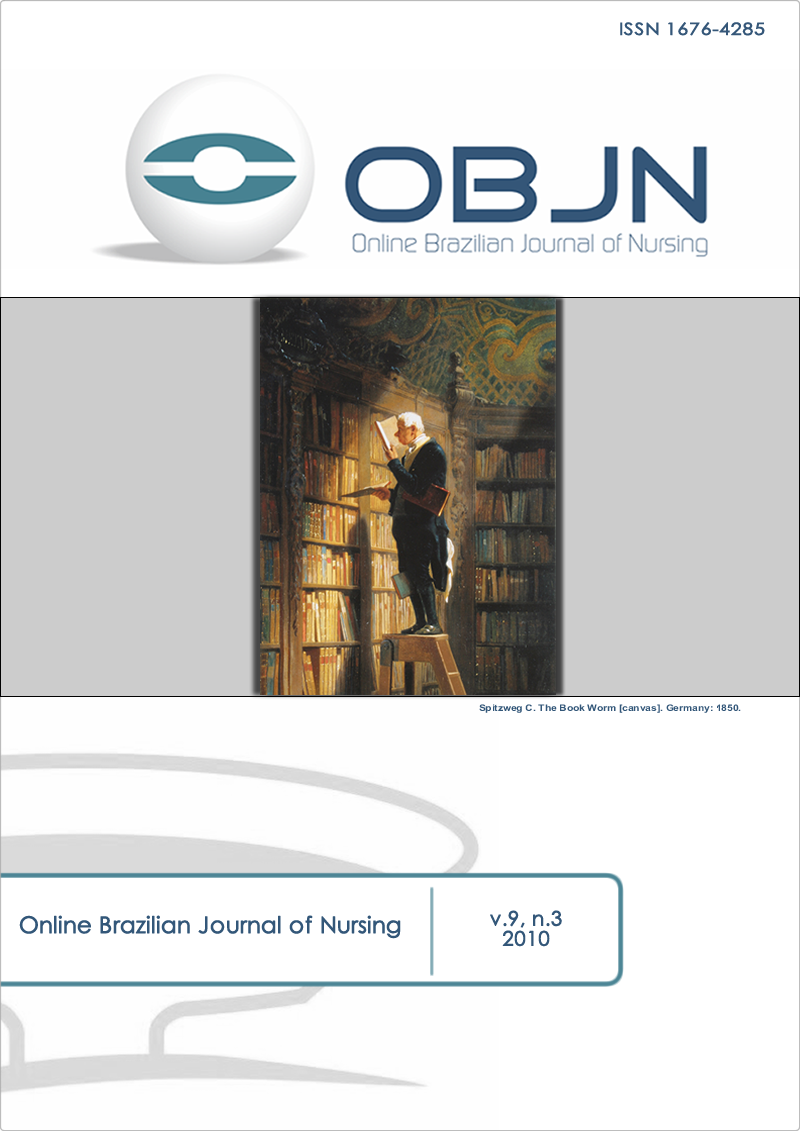Resumo
Context: Evaluating clinical practice based on standard language has become a necessity. Objective: This study aims to map nursing interventions according to the Nursing Interventions Classification (NIC), identifying the most prevalent Nursing Diagnoses in an intensive care unit within the first 24 hours of hospital admission. Method: Cross-sectional study. A cross-mapping method was used to analyze data collected from 150 medical records. A total of 195 diagnoses were identified, showing 21 different ones; and 1694 prescribed care. Result: The most recurrent diagnoses were Impaired Tissue Integrity and Impaired Skin Integrity, and the main intervention, Lesion Care (14.1% and 19.78%) was prescribed for both; Gas Exchange was affected by prevailing intervention Airway Control (29.76%), Ineffective Tissue Perfusion: cerebral and cardiopulmonary with priority intervention Neurologic Monitoring (38.3%) and Acute Cardiac Care (2.8%) respectively, the latter also being priority for Decreased Cardiac Output (1.3%). Conclusion: Most care was in line with the standard taxonomy of the Nursing Interventions Classification, though the interventions considered priority were limited.
Referências
North American Nursing Diagnosis. Nursing Diagnoses: Definitions and Classification 2009-2011. Indianopolis: Wiley-Blackwell; 2008.
Carvalho EC, Martins FTM, Dalri MCB, Canini SRMS, Laus AM, Bachion MM, et al. Relations between nursing data collection, diagnoses and prescriptions for adult patients at an intensive care unit. Rev Latino-Am Enferm. 2008;16(4):700-6.
Rocha LA, Maia TF, Silva LF. Diagnósticos de enfermagem em pacientes submetidos à cirurgia cardíaca. Rev Bras Enferm. 2006;59(3):321-6.
Souza EF, Martino MMF, Lopes MHBM. Diagnósticos de enfermagem em pacientes com tratamento hemodialítico utilizando o modelo teórico de Imogene King. Rev Esc Enferm USP. 2007;41(4):629-35.
Dochterman JM, Bulechek GM. Classificação das intervenções de enfermagem (NIC). 4ª. ed. Porto Alegre: Artmed; 2008.
Oliveira MF, Freitas MC. Diagnósticos e intervenções de enfermagem freqüentes em mulheres internadas em uma unidade de terapia intensiva. Rev Bras Enferm. 2009;62(3):343-8.
Mezzaroba RM, Freitas VM, Kochla KRA. O cuidado de enfermagem ao paciente crítico na percepção da família. Cogitare Enferm. 2009;14(3):499-505.
Lucena AF, Barros ALBL. Mapeamento cruzado: uma alternativa para análise dos dados em enfermagem. Acta Paul Enfermagem. 2005;18(1):82-8.
Coenen A, Ryan P, Sutton J. Mapping nursing interventions from a hospital information system to the Nursing Intervention Classification (NIC). Nurs Diagn. 1997;8(4):145-51.
Lucena AF, Barros ALBL. Nursing diagnoses in a brazilian intensive care unit. Int J Nurs Terminol Classif. 2006;17:139-46.
Müller-Staub M, Lavin MA, Needham I, Achterberg T. Nursing Diagnoses, Interventions and Outcomes – application and impact on nursing practice: Systematic Review. J Adv Nurs. 2006;56(5):514-31.
Paganin A, Moraes MA, Pokorski S, Rabelo ER. Factors that inhibit the use of nursing language. Int J Nurs Terminol Classif. 2008;19(4)150-7.
Dalri MCB, Rossi LA, Cyrillo RMZ, Canini SRMS, Carvalho EC. Validação do diagnóstico troca de gases prejudicada em adultos no atendimento de emergência. Cienc Enferm. 2008;14(1):63-72.
Schneider JS, Slowik LH. The Use of the Nursing Interventions Classification (NIC) with Cardiac Patients Receiving Home Health Care. Int J Nurs Terminol Classif. 2009;20(3):132-40.
Cyrillo RMZ, Napoleão AA, Pace AE, Chianca TC, Carvalho EC, Dalri MCB. Intervenções de enfermagem para situações de Volume de Líquidos Deficiente em vítimas de trauma. Rev Enferm UFPE Online [periódico na internet]. 2009 out/dez [acesso 09 ago 2009];3(4):1-11. Disponível em: http://www.ufpe.br/revistaenfermagem/index.php/revista/article/view/86
Crozeta K, Lacerda M, Meier M, Danski M. Nursing diagnostic in nursing’s professional practice in a surgical clinic - descriptive study. Online Brazilian Journal of Nursing [serial on the Internet]. 2008 November 12; [Cited 2010 September 20]; 7(3):[about 14 p.]. Available from: http://www.objnursing.uff.br/index.php/nursing/article/view/1867

